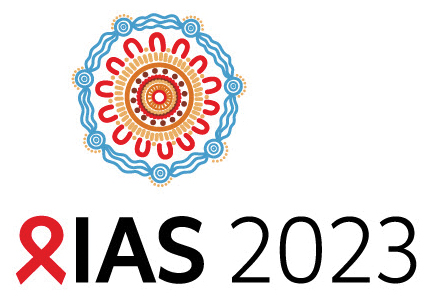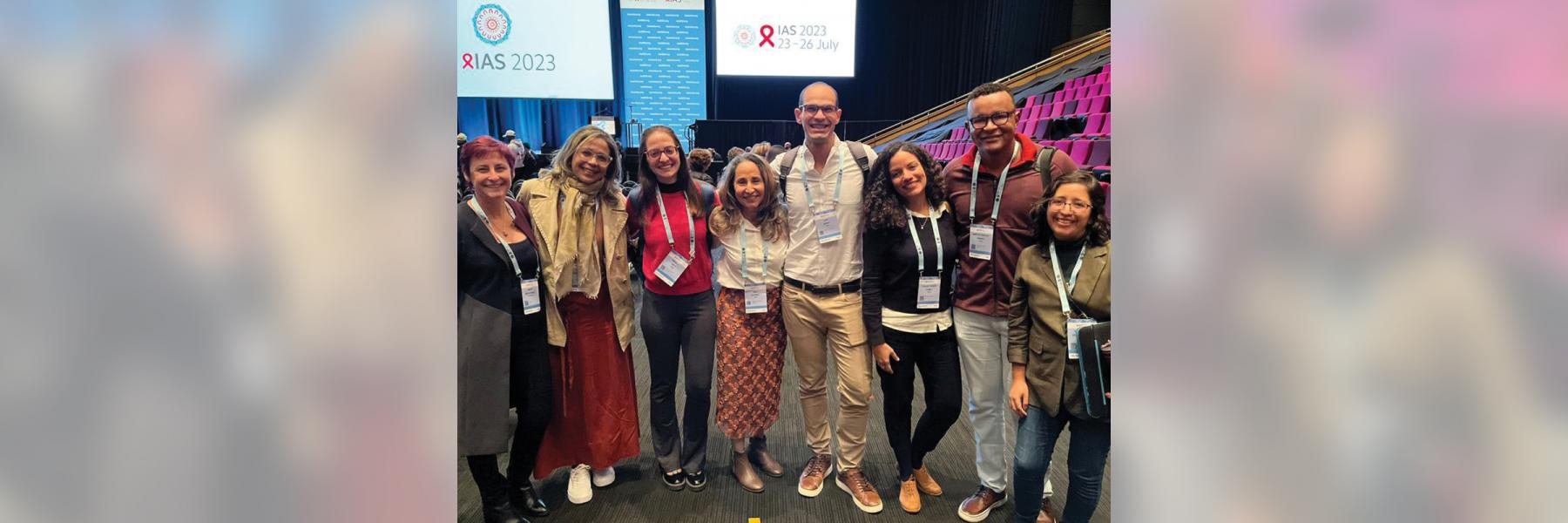Although pre-exposure prophylaxis, or PrEP, remains a key HIV prevention method, there are barriers to uptake, including lack of awareness, stigma, lack of healthcare options and structural inequalities, including racism, that prevent more people from protecting themselves. Two sessions at IAS 2023 focused on studies that explored some of those barriers and solutions for breaking them down.

What prevents people who inject drugs from accessing methadone?
Central Asia remains one of the few regions in the world where HIV incidence and mortality continue to increase, and people who inject drugs (PWID) are more likely to have acquired HIV than any other population. Throughout the world, harm reduction experts have found that opioid agonist therapies (OAT) like methadone or buprenorphine used for opioid use disorder (OUD) are important HIV prevention tools. Although methadone has been provided for free in Kazakhstan since 2008, less than one percent of people are on OAT among the estimated 90,000 PWID in the nation.
Amanda Liberman, a student researcher at the Yale School of Medicine, presented a study looking at barriers and facilitators to methadone uptake for HIV prevention and found a very good way to learn what kept PWID from accessing methadone: just ask them.
In addition to asking focus groups of PWIDs, Liberman’s team met with other groups: those who are not on methadone; people who are enrolled in a methadone program; and physicians and community health care workers. They also conducted in-depth interviews with methadone clinic directors and with political figures. The interviews took place in four cities representing different regions of Kazakhstan.
The top three answers for why PWID have not joined a methadone program were: fear of methadone, lack of program sites, and extensive and demanding requirements for program entry. Participants told the team that an inability to travel to different methadone sites was also a problem, and some were incarcerated or in hospitals and were not able to access treatment centers. Doctors said that a lack of information, or misinformation, about methadone was a barrier (although a few program directors showed bias against drug users).
What would make it easier for PWIDs to get on methadone? People already in a program said take-home dosing would make it easier for others to start (generally people are required to take their daily doses in the clinic). Community health care workers emphasized the need for multidisciplinary collaboration among different specialties, and doctors said better information for PWIDs was needed. PWIDs recommended changing clinic hours, providing 24/7 access, as well as increasing the number of sites and adding sites, specifically in hospitals and in the criminal justice system.
“Several highlighted the need to access different types of medications for opioid use disorder such as buprenorphine,” Liberman said.
However, methadone program directors appeared resistant to some proposed changes, saying it was “not right” to let patients take home doses, and, paradoxically, that a narrow window of daily distribution was necessary because “drug addicts are lazy.”
“Barriers were at all levels: state, program, clinician, and patients [and potential patients],” Liberman said, and solutions could begin at any level. “While fear of methadone is high only among people who are not on methadone, it’s low among all other groups. This suggests the possibility for ‘diffusion of innovation,’ which is an implementation science concept that suggests that if more people were on methadone, it would encourage others to enroll.” She also recommended provider-based stigma interventions, which have shown promise for methadone programs.
Would women and girls use the dapivirine vaginal ring?
Zimbabwe has a very high HIV burden, with nearly 13% of the population having HIV. Adolescent girls and young women (AGYW) are disproportionately affected compared to their male counterparts. As in other countries, oral PrEP is a key HIV prevention tool, but there are barriers to uptake, including pill burden and concern over privacy. Malvern Munjoma, a research statistician with Population Solutions for Health in Zimbabwe, shared results from a pilot study conducted through the Zimbabwe Ministry of Health showing monthly DPV-R as an alternative to daily oral PrEP, and might even sidestep some of the structural and behavioral challenges to PrEP uptake.
The aim was simple: compare acceptability of DPV-R against daily oral PrEP. Conducted across eight districts in the country, AGYW ages 18–25 years old screened as highly vulnerable to HIV were enrolled in two arms of the study and followed up monthly between June and November 2022, to compare uptake and continuation rates. Interviews were conducted with clinicians involved in PrEP service.
Of 1,466 AGYW deemed eligible for PrEP, more than two-thirds (1,128) chose DPV-R. Uptake was similar by age but differed significantly by residence: those in rural districts preferred DPV-R at a rate of more than 97 percent. Clients were slightly more likely to continue DPV-R compared to oral PrEP although continuation rates were high for both arms. Only five participants seroconverted after starting on DPV-R, compared to one seroconversion while on oral PrEP over the same period. Service providers said AGYW liked the DPV-R for its convenience and discretion.
“In most districts most girls come from a very conservative culture, and sex before marriage is a taboo,” Munjoma said. “Also, our rural population has limited options [for prevention] and condoms are not as readily available as in the urban areas, and if friends and peers and family find out that you are taking some form of medication, it always raises curiosity. So, the ring is offering that very discreet option. One provider said, ‘the ring is their most prized secret their parents or friends will never know.’”
PrEP4U: Helping youth in Vietnam access HIV prevention and sexual health care
Vietnam has reported a growing number of new HIV cases among people 15–29 years old, and sexually transmitted infection (STI) rates are high in this population. “Knowledge and awareness of young people and students are very limited about HIV and PrEP and also STIs,” said Tham Tran from the PATH STEPS Project. She shared one “edutainment-based intervention,” PrEP4U, co-created by the USAID, STEPS and the Vietnam Ministry of Health to promote HIV and sexual health care engagement and practices among students and other youth.
In March 2022, STEPS and partners embarked on a “PrEP4U tour” across three cities—Ho Chi Minh City, Hanoi and Dong Nai—to reach out to youth about HIV risks and prevention tools, with an emphasis on reducing stigma and gaps in care. The tour included talk shows with clinical experts, interactive edutainment games—even a PrEP song—focused on safer sex and sexual health, and booth exhibitions where students interact with staff from community-based primary care clinics and receive HIV testing and PrEP counseling.
The key to PrEP4U was a collaboration with student associations and school clubs as well as key influencers, often the president of the student association, to build and leverage “PrEP4U ambassadors.” There is also a PrEP4U Facebook fan page that serves as a hub of information on sexual and reproductive health, and it’s had over a million views since its launch in May 2022. “Between March and September 2022, 32 in-person PrEP4U events reached more than 8,500 students, distributed 1,096 HIV self-test kits and enrolled 317 individuals on PrEP,” Tran said. “Targeted edutainment activities centered around principles of choice and equity to ensure that PrEP4U messaging and imaging resonated with different youth segments, including [LGBTQ+] youth.”
Tran said PrEP4U increased health care access and convenience by offering HIV and sexual reproductive health (SRH) services directly within schools and engaging campaign ambassadors and influencers. Youth-focused PrEP/SRH campaigns can be scaled and adapted for other settings to bring PrEP and sex education closer to populations in need. “We are continuing (PrEP4U) with a network of students and we are collaborating with a private sector partner to amplify that campaign on a larger scale,” Tran said.
Racial inequalities in HIV testing
PrEP and other HIV prevention tools go hand-in-hand with testing. The HIV test comes before the prescription, meaning if people don’t get tested, they’re not likely to get PrEP.
Marcus Vinicus Franca, a researcher from the Universidade do Estado da Bahia in Brazil, shared results of testing inequalities among adolescent MSMs and transgender women. He started with the assumption that race was a major factor. “We all know that HIV testing is an important method for early diagnosis, treatment and prevention,” he said. “Unfortunately, in Brazil, we have a difficult situation with men who have sex with men and transgender women being deeply affected by the epidemic. Additionally, we have racial disparities with a reduction of 51% in the proportion of AIDS cases among whites, versus a reduction of just 36% for Blacks. And we can see another worrisome situation—it’s an upward trend in HIV incidence among men aged 15–24.”
In the PrEP1519 cohort study, Franca and colleagues set out to investigate the association between HIV testing in a lifetime and race among adolescent males who have sex with men (MSM) and transgender women in three Brazilian state capitals: Salvador, São Paulo and Belo Horizonte. The outcome variable was having been tested for HIV in a lifetime. Race was self-reported in three categories: White, Black and mixed race (or brown, which is called “pardo” in Portuguese). White adolescents had far more HIV tests than Black and mixed-race Brazilians combined, and testing rates decreased with the darkness of skin tone: just under 57% testing rate for Blacks, 58% for exclusive mixed-race (or brown), and nearly 79% for Whites.
“In the multivariate analysis, when we adjusted for age, education, employment, living with family, mother’s lack of knowledge about their sexual orientation, sex work and unprotected anal sex,” he said, “Black and mixed-race combined people were 33% less likely to have been tested for HIV in a lifetime than were Whites, and Black people had less access to higher education and to private health insurance, which reflects the Brazilian reality.” These results, he said, stem from structural barriers to accessing HIV testing and prevention services as well as structural racism in society and health institutions in Brazil.


